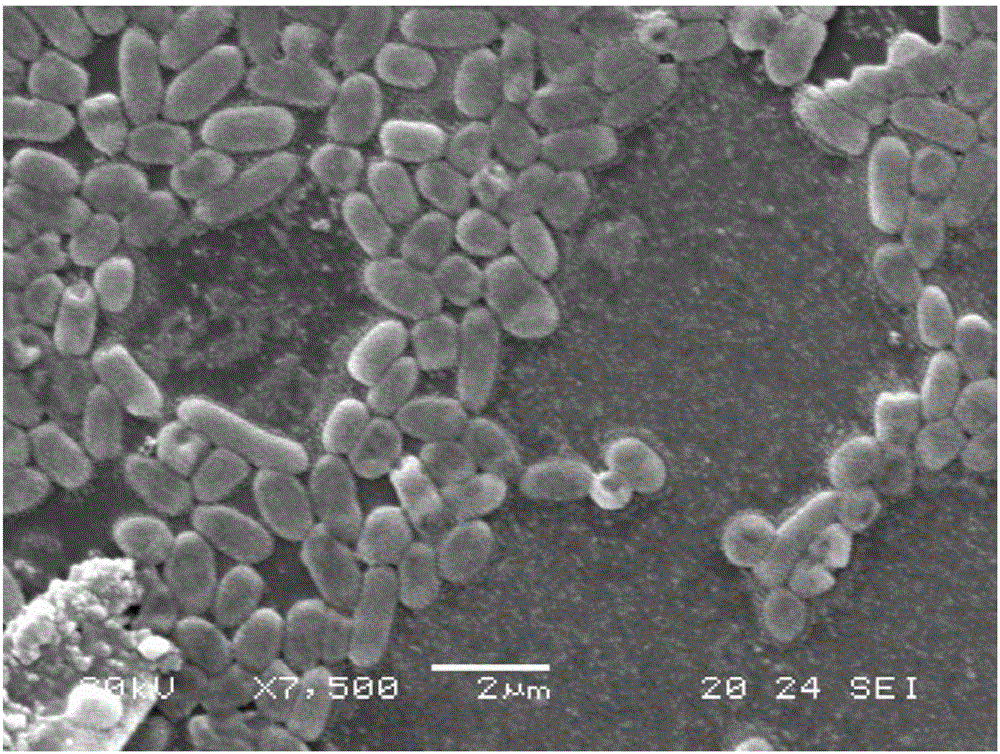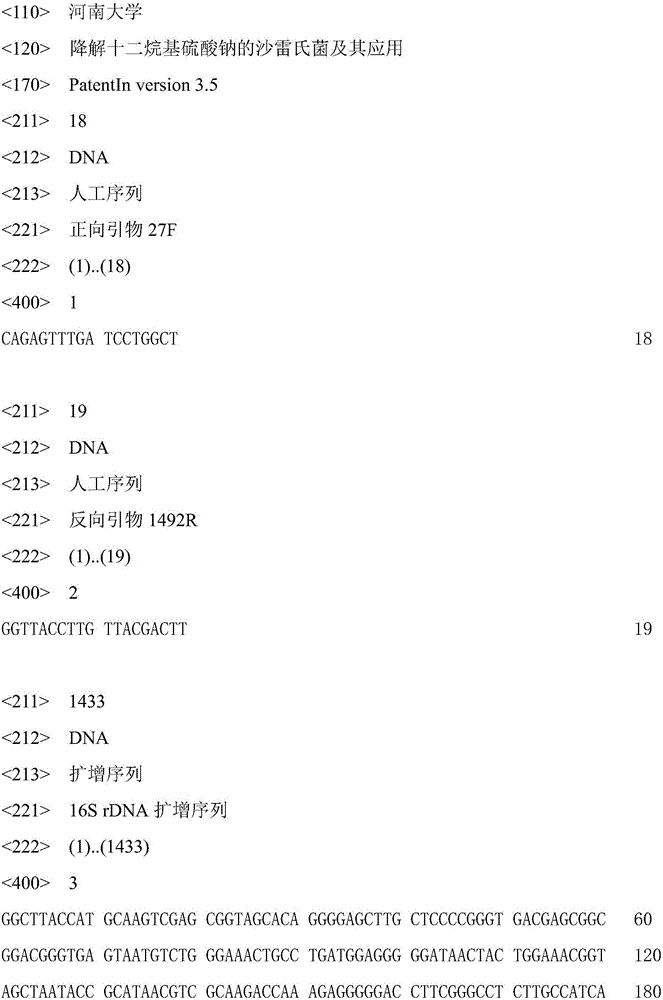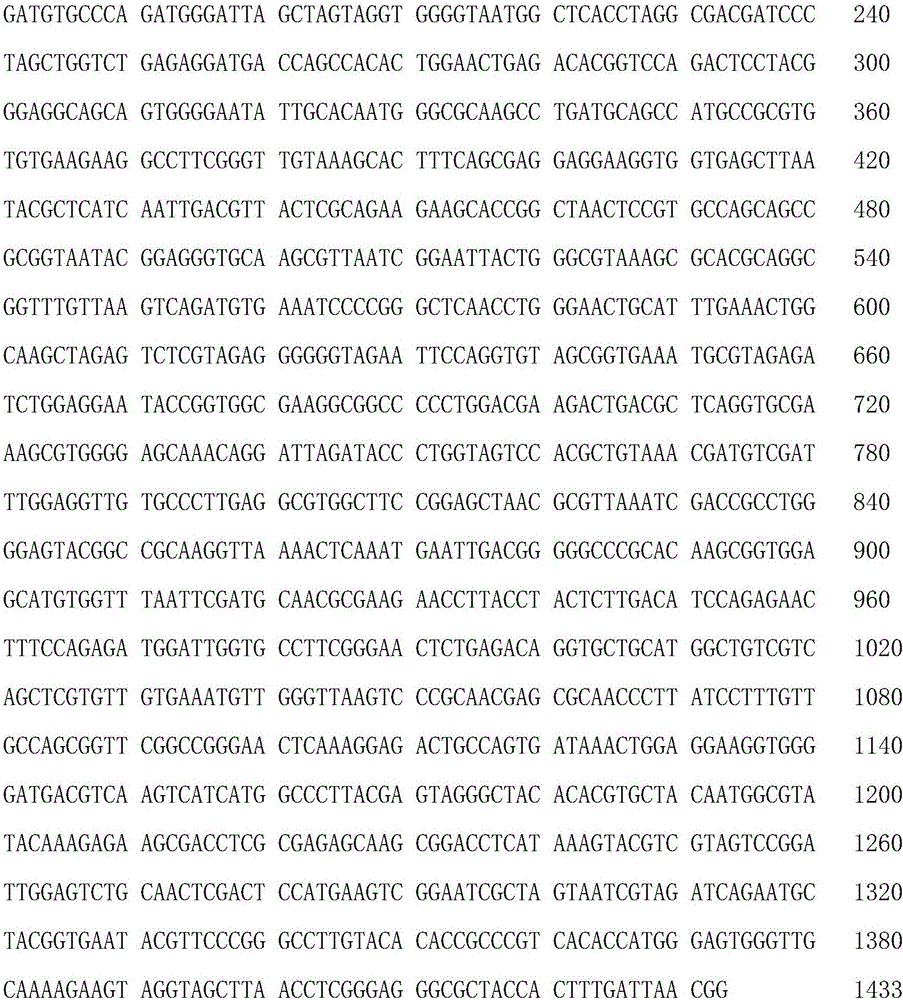Serratia marcescens for degrading sodium lauryl sulfate and use thereof
A technology based on sodium lauryl sulfate and Serratia, applied in the direction of microbial-based methods, bacteria, restoration of contaminated soil, etc., can solve the problem of no report on the degradation ability of Serratia marcescens
- Summary
- Abstract
- Description
- Claims
- Application Information
AI Technical Summary
Problems solved by technology
Method used
Image
Examples
Embodiment 1
[0021] The separation and screening method of Serratia degrading sodium lauryl sulfate comprises the following steps:
[0022] 1) 20 parts of soil samples were taken from the periphery of a washing powder manufacturer in Kaifeng City, as materials for the isolation and screening of degrading bacteria;
[0023] 2) Select LB medium to isolate the strains of the collected soil samples by the dilution coating plate method, and obtain a total of 162 strains of bacteria;
[0024] 3) Using LB medium as the base medium, prepare enriched medium containing different concentrations of SDS (50mg / L, 100mg / L, 150mg / L, 200mg / L); streak inoculate the 162 strains of bacteria that have been obtained Cultivate overnight at 37°C on rich medium plates containing different concentrations of SDS, and conduct preliminary screening of the strains by observing the growth of the strains, and screen out 5 strains of bacteria that are stable and tolerant to high concentrations of SDS;
[0025] 4) Inocula...
Embodiment 2
[0050] The application of Serratia (CCTCC NO:M2015246) in degrading SDS, specifically: Take Serratia marcescens (CCTCC NO:M2015246) to expand culture, collect the bacteria, add the bacteria and a small amount of glucose to the SDS-containing in the sewage.
Embodiment 3
[0052] The preparation steps for degrading SDS are as follows: take Serratia marcescens (CCTCC NO:M2015246) to expand and cultivate, collect the bacteria, and add glycerol to freeze (conventional operation).
[0053]
[0054]
PUM
 Login to View More
Login to View More Abstract
Description
Claims
Application Information
 Login to View More
Login to View More - R&D
- Intellectual Property
- Life Sciences
- Materials
- Tech Scout
- Unparalleled Data Quality
- Higher Quality Content
- 60% Fewer Hallucinations
Browse by: Latest US Patents, China's latest patents, Technical Efficacy Thesaurus, Application Domain, Technology Topic, Popular Technical Reports.
© 2025 PatSnap. All rights reserved.Legal|Privacy policy|Modern Slavery Act Transparency Statement|Sitemap|About US| Contact US: help@patsnap.com



